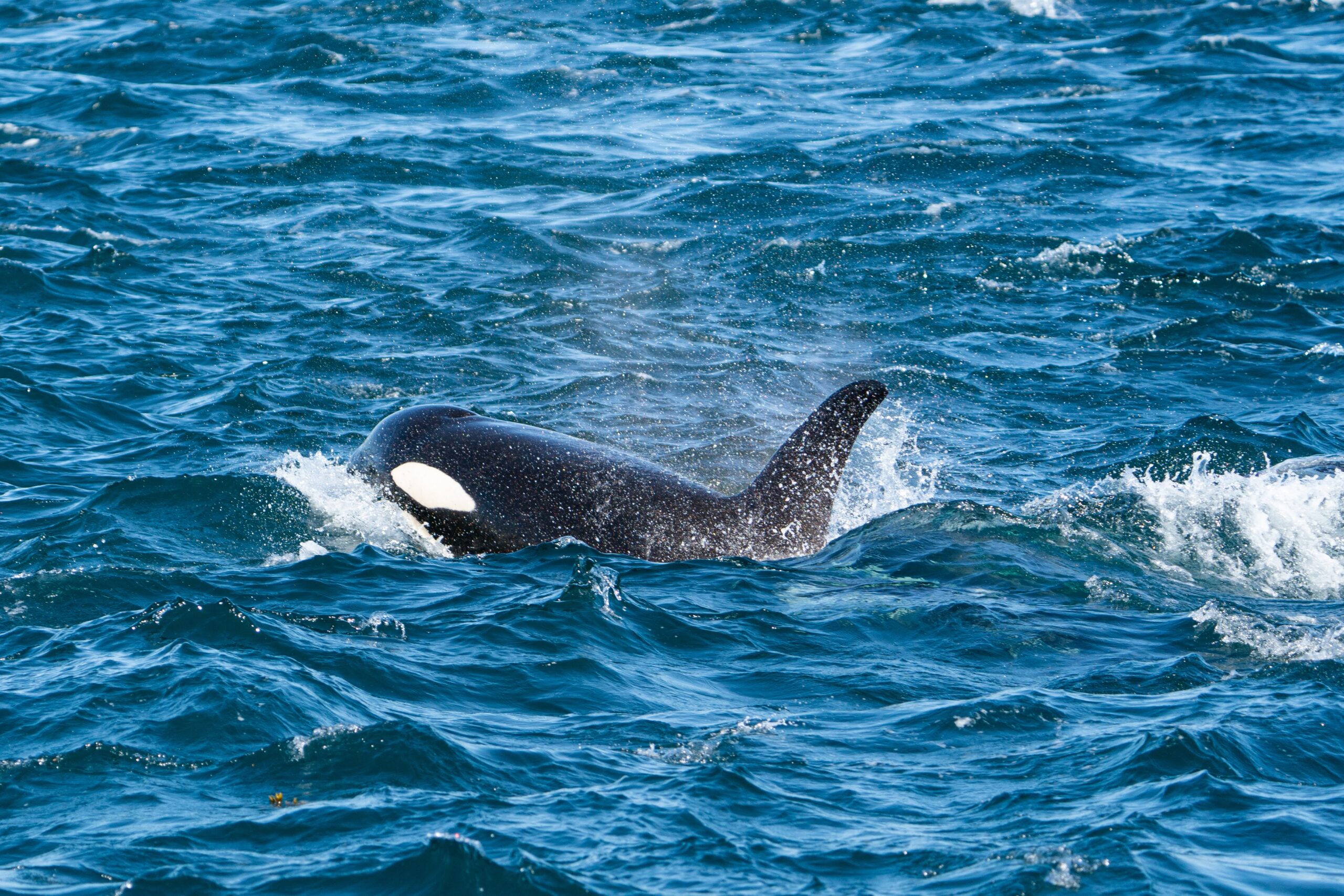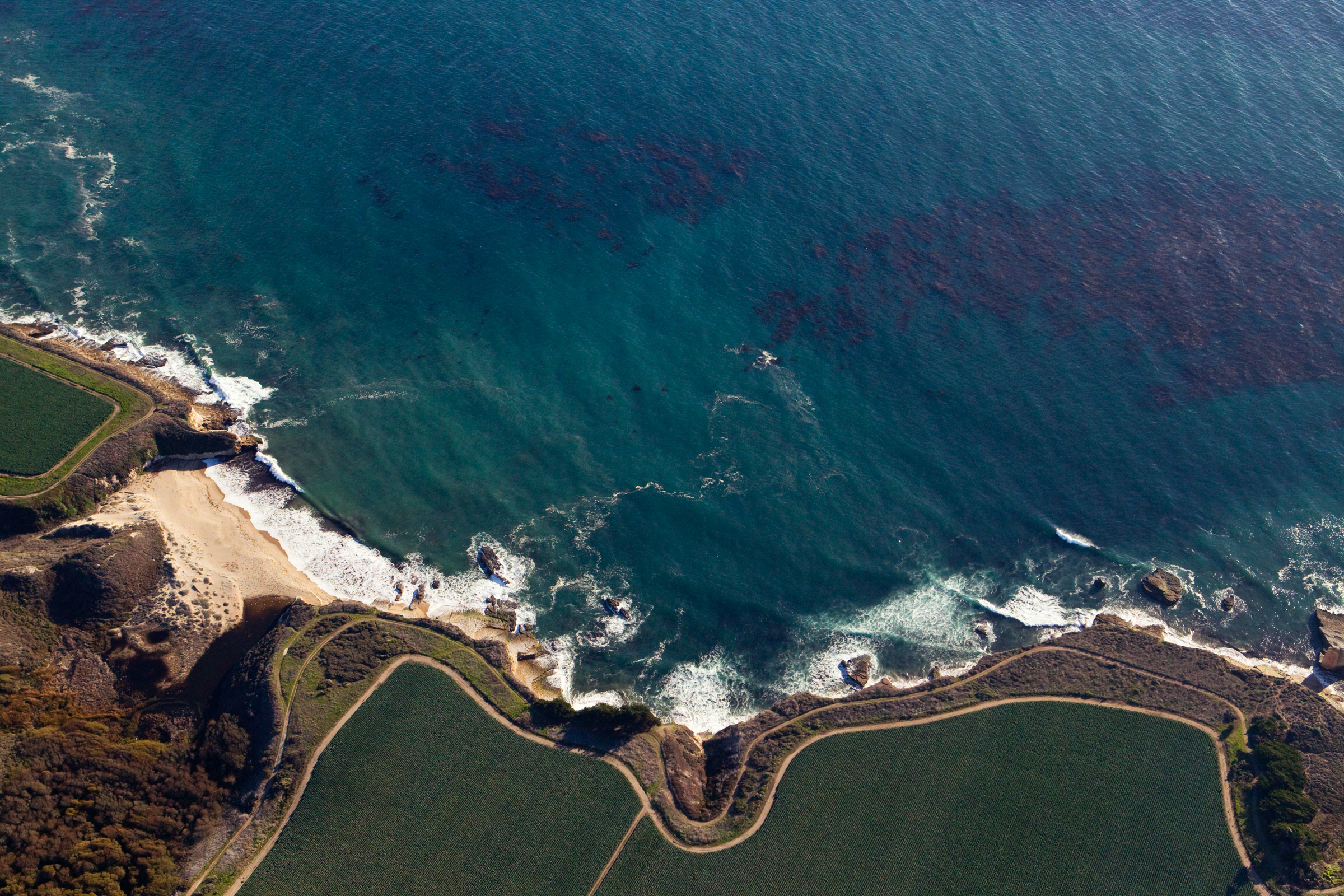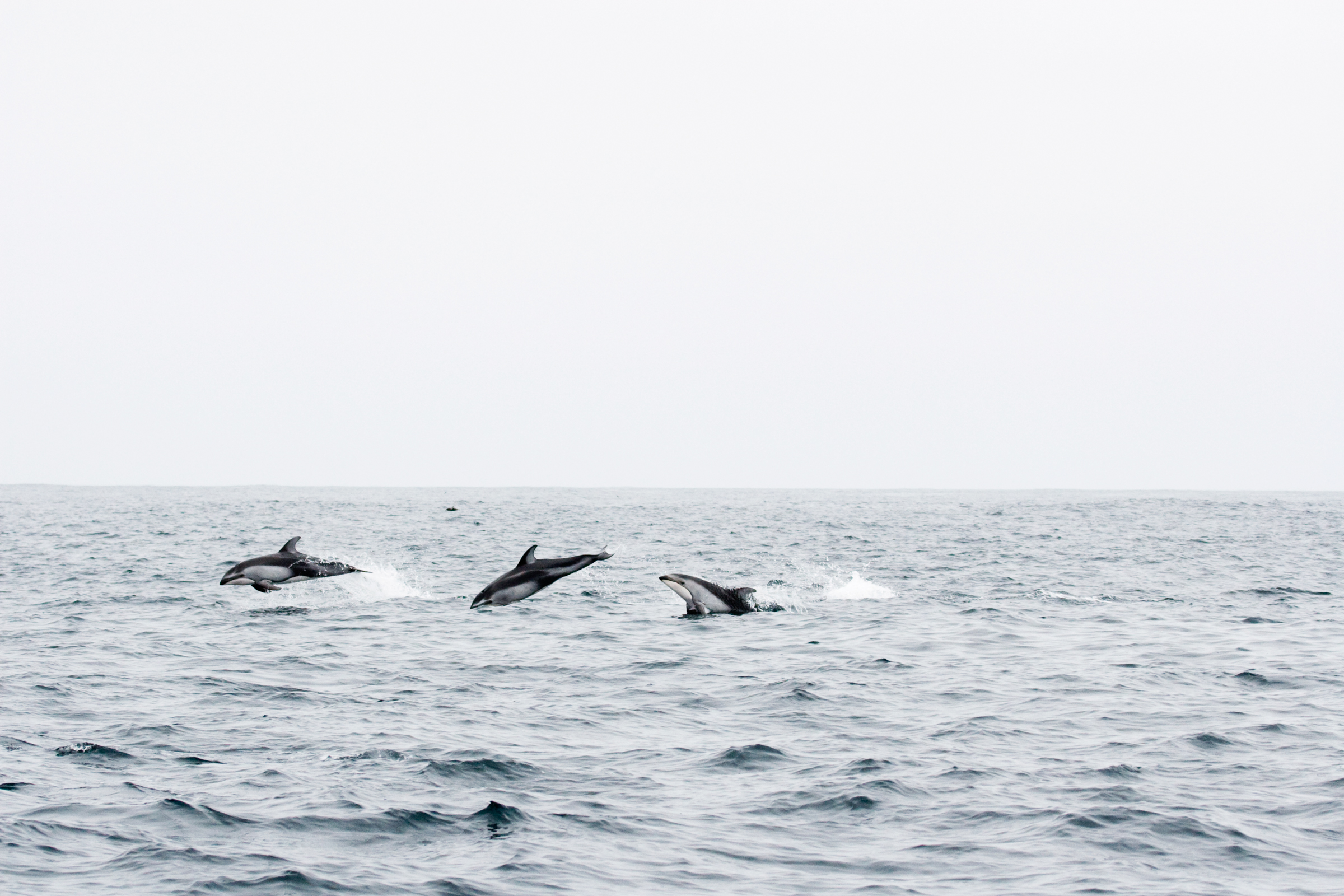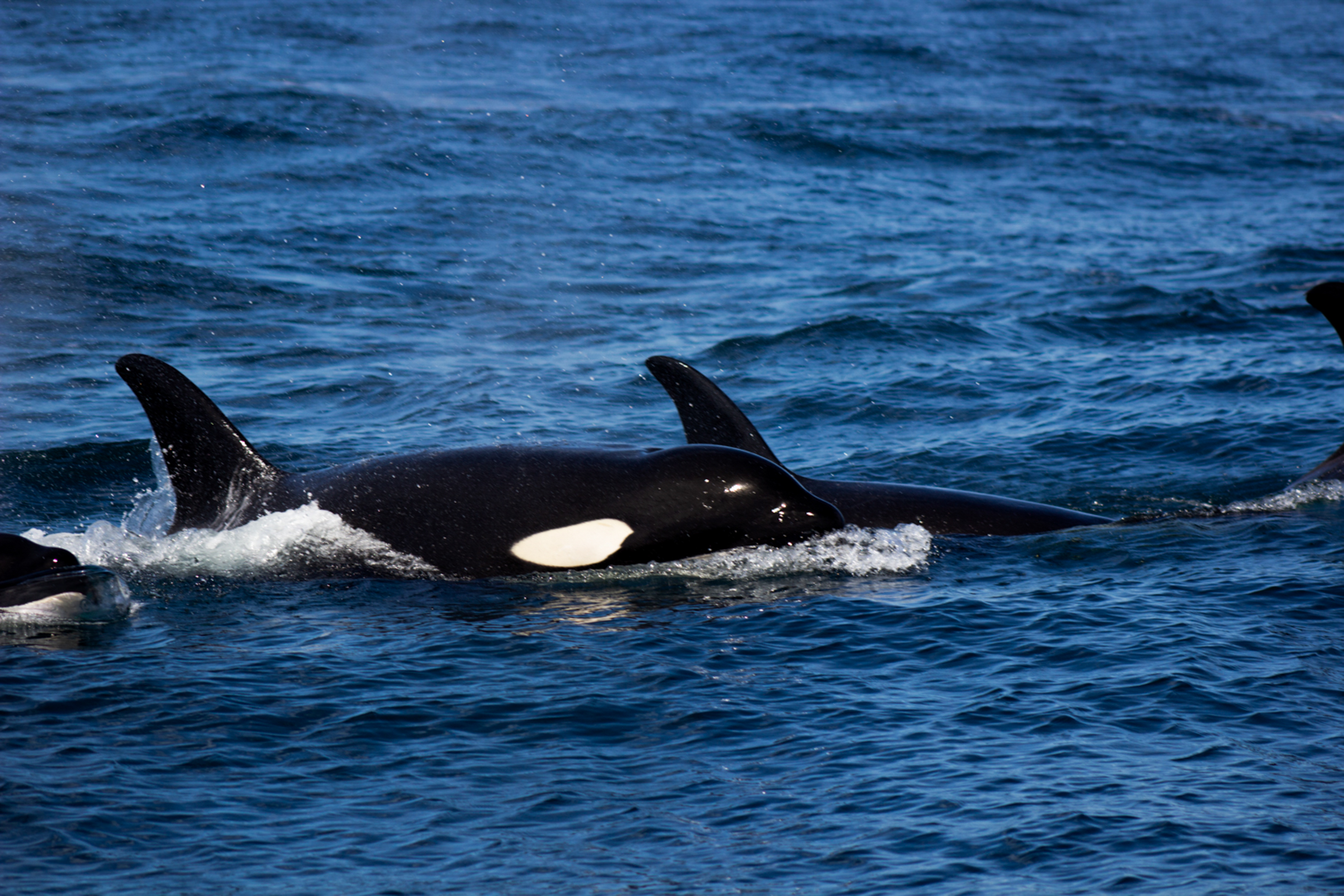Orca
ORCA (Orcinus orca)
Orcas, also known killer whales, are the largest dolphin species. You'll find them in every ocean, and are the apex predators of our seas. Orcas display an incredibly strong sense of culture with pods or small populations, sometimes called ecotypes, specializing in a specific prey type, utilizing and passing down through generations specialized hunting techniques, and communicating through different languages. Killer whales are highly social and have more cortical neurons than any other mammal, including humans. Revered by some and feared by others, Orcas have played a central role in folklore, art, and scientific narratives for centuries.
Difficulty: Difficult
Orca Description
Orcas have a very robust body, with a conical head. Unlike most other dolphins, killer whales lack a well-defined beak. Their bodies are black with a white ventral sickle like shape, a gray saddle behind the dorsal fin, and a white eye patch above the actual eye. Males can be distinguished from females by their large, erect, and spike like dorsal fin that can reach six feet, compared to the sickle-shaped dorsal fin of females that is much smaller in size. Orca pectoral fins are large-broad, and rounded. Male killer whales average around seven meters (23 feet) in length and weigh around six tons. Females are smaller, with an average length of around six meters (20 feet) and weighing around four tons. Like most marine mammals, orcas have a blubber layer to keep themselves warm, being ten centimeters thick (four inches).
A female orca surfaces, showing her distinctive black body coloration and white eye patch. The female orca has a much smaller, and sickle shaped dorsal fin, compared to the large, spike like dorsal fin of a male.
Orca Distribution and Habitat
Orcas are found in all of the world's oceans, having the largest distribution out of any cetacean. Killer whales are not limited by water temperature or depth. They occur at their highest densities near the coasts and away from tropical seas, including in the north Pacific and Atlantic oceans, as well as in Antarctica. In Antarctica, orcas are frequently found along the pack ice, even venturing into it, along breaks in the ice. Killer whales in the arctic however, generally stay away from the ice edge. On few occasions, orcas have ventured into freshwater rivers, though these are considered isolated incidences. Researchers have classified orcas into different ecotypes and populations, including transients, residents, and offshore ecotypes. Each ecotype may be found in each other's range, but they generally do not interact with one another. During our orcas and mobula ray photo tour, we encounter the killer whales in the Sea of Cortez has they hunt the large rays congregating in the warm waters of Baja California. Despite being heavily studied, it is hard to estimate orca populations across the oceans, with current conservative estimates being around 50,000 adult orcas.
Orcas have the largest distribution of any cetaceans, being found in all oceans. They are however found in the highest densities along the coastline.
Orca Feeding Biology
Orcas are apex predators in their ecosystem, which means they are the largest predator, having no natural predators of their own. Killer whales have a diet ranging from small fish and squid to gray, sperm, and even blue whales. Tropical orca pods tend to have more varied diets than pods from higher latitudes. These orca pods tend to be more specialized, feeding primarily for example on salmon, tuna, or herring, or other marine mammals like smaller dolphins, pinnipeds, or whales.
Fish eating orcas either chase individual large fish like salmon, or coral their smaller prey like herring, by flashing their white undersides, or releasing bubbles near the fish. This forces their prey into tighter baitballs. Killer whales then use their tails to slap the baitball, stunning or killing up to fifteen fish, which are eaten individually afterwards. Sharks are killed by orcas at the surface, while individual rays are separated from the school, before being killed and consumed.
Orcas that predate other marine mammals utilize different hunting techniques to subdue their prey. On rare occasions, orcas beach themselves to pursue seals and sea lions, but in general their prey is taken in the water. To attack their prey, orcas will generally chase their prey to exhaustion, then, to avoid injury, orcas disable their prey. To do so, orcas will throw their prey into the air, ram them with their bodies, breach onto them, or slap them with their tail. Doing so repeatedly will kill the prey, after which the killer whales consume it. Depending on the prey species, orcas may only eat part of their prey, like livers of sharks, or lower jaws and tongues of whales.
Orcas need to eat around 27 kilograms (500 lb) each day. Specialized hunting behaviors are learned from their mothers, with certain techniques taking years to perfect by the younger generation.
Orcas have a variety of prey, often specializing on fish or marine mammals. This can include smaller species of dolphins like the Pacific White-sided Dolphin (Lagenorhynchus obliquidens).
Orca Social Organization
Orca social structures are complex, comparable to those of apes and elephants. They differ depending on if the orcas are resident or transient killer whales. However, all orcas are social, with matrilineal groups consisting of two to four generations.
For resident orcas, matrilines generally consist of two to nine individuals. The social bonds of resident orcas are extremely stable with no permanent separation of an individual from a resident matriline having ever been recorded. Closely related orca matrilines form loose aggregations called pods, usually consisting of one to four matrilines. These pods may be seen together for extended periods of time, but can separate for months at a time.
Transient orca pods are smaller than resident pods, typically consisting of one adult female and one or two of her offspring. Unlike resident orcas, extended or permanent separation of transient killer whale offspring from natal matrilines is common, with juveniles and adults of both sexes doing so.
For both transient and resident orcas, males typically have the strongest bond with their mothers, rather than other females. This is why males are sometimes called "momma's boys" with their mothers often doing their hunting, even will into adulthood. Friendships between similar sized individuals seem to exist based on play behavior and synchronized surfacing.
Like other cetaceans, orcas utilize different vocalizations, which include clicks, whistles, and pulsed calls. Resident orcas tend to be more vocal than transient orcas, as their fish prey is not sensitive to auditory signals, compared to the marine mammals that transients hunt.
Orcas have complex social structures, made up of matrilineal lines that can join to form pods
Orca Reproduction
Despite long term orca studies, much still remains unknown about orca reproduction. Female orcas become sexually mature at ten years old and are in their prime sexual reproductive age at twenty years old. To prevent inbreeding, males always mate with females from other pods. Resident orcas have a peak calving season in winter, but it can occur at any time. Orca gestation lasts fifteen to eighteen months, with a single calf being born about once every five years. At birth, orca calves are around six feet (1.8m) long and weigh around four hundred pounds (181kgs). Calves can eat solid food at a young age, but will nurse for at least a year and are often not fully weaned until two years of age. Unlike most mammals, orcas undergo menopause, as they stop reproducing at around forty years old.
The lifespans of wild female orcas averages around fifty to eight years, but may possibly live over a hundred years. Males have shorter lives, averaging around thirty years.
Orca calves maintain close bonds with their mothers throughout their lives, and are not fully weaned until two years of age!




